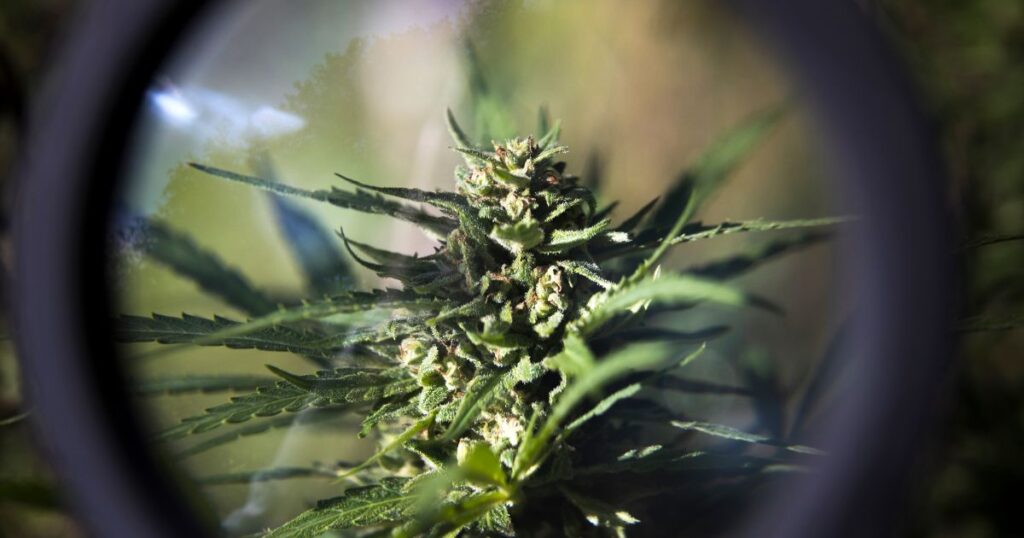The Department of Veterans Affairs (VA) has recently taken a step that could redefine the future of medical marijuana research. By issuing a notice seeking contractors to analyze and explain the benefits and risks of medical marijuana, the VA is acknowledging the importance of providing veterans and clinicians with evidence-based resources. This is especially significant given the restrictive barriers to cannabis research historically, and it presents an opportunity to better understand its relationship to mental health conditions like PTSD and anxiety, among others.
This initiative reflects a readiness to address veterans’ healthcare needs more holistically, and potentially replace reliance on traditional, often overprescribed medications. For veterans underserved by existing treatments, this could be the beginning of a long-overdue shift toward improving access to alternative therapies.
Step Forward in Cannabis Research
For decades, cannabis research in the U.S. has faced government-imposed restrictions due to its current classification as a Schedule I drug under federal law. This designation continues to hinder research on its potential benefits. Despite growing anecdotal evidence from patients—including veterans—highlighting the therapeutic value of cannabis, the lack of data has prevented, some argue its full integration into healthcare.
Veterans, who often endure chronic pain, PTSD, and insomnia, have been vocal advocates for medical marijuana. Surveys cited by the VA reveal that approximately 9% of veterans have used cannabis in the past year, with 40% of those users turning to it specifically to manage medical conditions. However, current discussions around medical marijuana between VA doctors and veterans are challenging because of the fragmented and evolving research landscape. A need for clarity and education—founded on robust scientific evidence—is critical.
Through the “Systematically Testing the Evidence of Marijuana (STEM)” project, with the support of following in support of the VA Portland Health Care System (VAPHCS), the VA aims to bridge these gaps. This program will not only analyze existing research but will also identify areas requiring further investigation. The initiative includes the creation of accessible educational materials for clinicians, researchers, and the general public, helping to demystify cannabis for all stakeholders.
The STEM scope of work has three main goals:
- Educate clinicians about the evidence, and its quality, regarding the benefits and harms of cannabis in order to facilitate discussions with their patients
- Identify specific research gaps to help researchers design high-yield studies that will advance the field
- Provide resources for patients and the general public about cannabis-related evidence
Shining a Light on Veterans’ Challenges and Needs, and How Medical Marijuana Could Help
For many veterans, recovery and well-being remain elusive due to limitations in traditional treatment options. Prescription medications, including opioids and anti-anxiety drugs, have dominated VA-prescribed therapies, but they are not without their risks. Dependence, withdrawal symptoms, and limited long-term efficiency are just a few of the struggles veterans face when using pharmaceuticals to manage chronic conditions.
Cannabis has emerged as a critical alternative in this landscape. Veterans consistently report that marijuana not only reduces symptoms like chronic pain, anxiety, and sleeplessness but also improves overall quality of life. However, many veterans live in rural areas with less access to VA resources; this demographic represents 25% of the veteran population. For these individuals, cannabis may be one of the few options to address their healthcare needs.
The VA’s notice acknowledges this regional disparity, where it talks about the importance of providing reliable cannabis-related resources for these underserved populations. With a focus on educating clinicians, the STEM project opens the door for rural veterans to have informed conversations with their healthcare providers—conversations rooted in evidence rather than stigma or misinformation.
Why This Marijuana Research Matters for Veterans
The implications of this initiative extend beyond the medical establishment. They reach into the lives and homes of veterans overcoming immense personal struggles, from chronic physical pain to deeply rooted mental health conditions. By leveraging the STEM project’s findings, VA clinicians will be better equipped to discuss and recommend medical marijuana where appropriate. Furthermore, the insights gained from this research could eventually influence federal policy, potentially paving the way for broader access to cannabis treatments across the country.
Veterans have long been advocates for alternative treatments, citing the failures of conventional medicine to meet their needs. Painkillers and anti-depressants often leave veterans with side effects that worsen their overall well-being. Medical marijuana could provide a safer, more effective solution. The VA’s direct involvement in cannabis research marks a pivotal moment in establishing credibility and legitimacy for marijuana within the healthcare system.
A Call for Continued Progress
By tackling systemic gaps in cannabis research, the VA has positioned itself as a leader in advancing alternative therapies. However, the progress shouldn’t end here. Beyond documenting cannabis evidence, the resulting insights need to drive real change—both within the VA healthcare system and in the larger conversation about veterans’ access to medical marijuana.
Ultimately, the STEM project has the potential to revolutionize how cannabis is perceived and utilized, not just for veterans but for society as a whole. Through systematic research, thorough approach, and a commitment to eliminating misinformation, this initiative could set the stage for widespread benefits, fostering a new era of compassionate and effective care.
To veterans who have waited far too long for alternative treatment options, this represents hope. It’s an acknowledgment that their health deserves every possible resource—and every effort to make care as effective as possible.
For lawmakers, researchers, and the broader public, this initiative serves as a reminder that progress is possible. Veterans, who have sacrificed so much, deserve access to treatments that can genuinely improve their lives. The VA’s STEM initiative is a step in the right direction, but it is up to all of us to ensure that their efforts translate into meaningful outcomes—ones that change policy, practice, and lives.
Veterans should not have to wait any longer for the care they deserve. It’s time for change, and with projects like STEM, the VA is beginning to answer that call.


















